The Ollies: Mastering the Essential Trick in Watersports
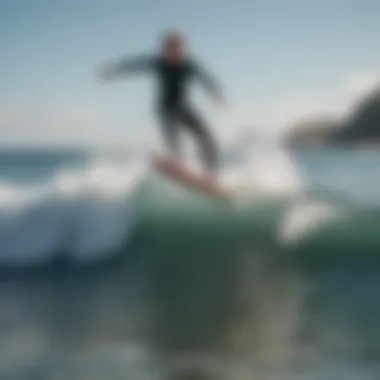
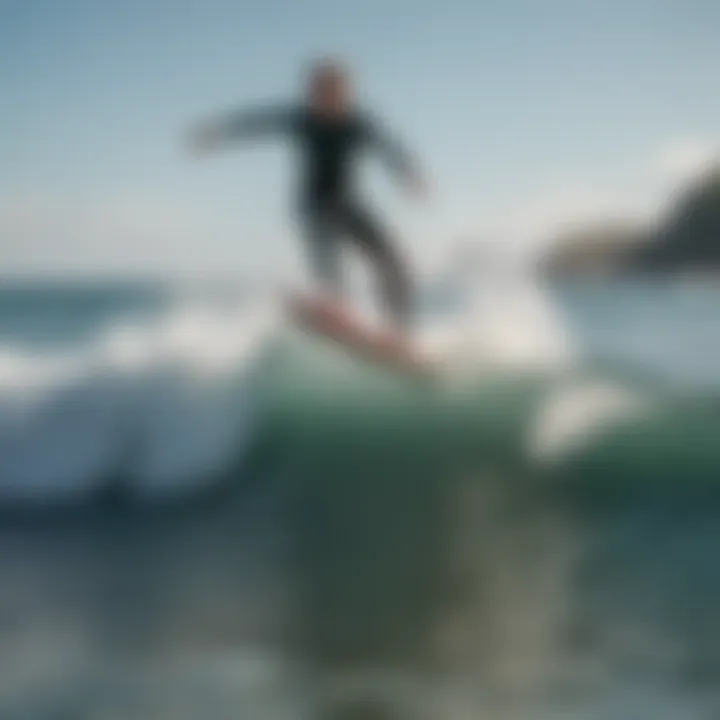
Intro
When it comes to watersports, the thrill of carving through the waves or gliding across a serene lake is something that can’t be overstated. However, what often sets skilled enthusiasts apart from beginners isn’t just their confidence or cool gear; it’s the mastery of fundamental tricks, particularly the ollie. The ollie serves as a cornerstone technique that is essential across multiple aquatic disciplines, like surfing, paddleboarding, and kitesurfing.
Understanding the ollie can completely transform your experience out on the water. It enhances not only your performance but also your enjoyment. This article aims to break down the techniques for executing an ollie, tackle the nuances involved in mastering this trick across different boards, and discuss common challenges that novices often face. Furthermore, we’ll reveal how mastering the ollie opens the door for more advanced maneuvers, share some effective training tips, touch on important safety considerations, and outline how this foundational skill can impact your journey in watersports.
Let’s first dive into the gear essentials that will set you up for success.
Understanding the Ollie
To grasp the essence of mastering the ollie, it is vital to understand this trick’s fundamental nature. An ollie isn't just a flashy move; it’s a gateway to advanced skills in various watersports tailored for surfers, paddleboarders, and kitesurfers alike. Knowing how to execute an ollie properly not only enhances one’s performance on the water but also provides the confidence needed to tackle more complicated maneuvers later on.
Definition and Origin
The ollie traces its roots back to skateboarding, something many watersport enthusiasts might not know. It's a technique that allows riders to lift their board off the surface without using hands, relying solely on body movement. The same principle applies across different boards in watersports. Though the watersport variants may differ slightly, the essence remains intact: a quick upward thrust paired with an intuitive body motion.
This trick’s adaptation into surfing and paddleboarding happened as sports evolved, blending creativity with technical prowess. For enthusiasts in these fields, mastering the ollie opens up a world of possibilities, like catching more air and executing jumps on waves or navigating tricky river currents. Knowing its background gives practitioners a richer understanding of its application, thus encouraging them to push their limites further.
Importance in Watersports
The significance of the ollie in watersports can't be overstated. Here are just a few reasons:
- Foundation for Other Tricks: The ollie is essentially the building block for various stunts. Once a rider can perform a solid ollie, they can smoothly transition into other skills, like grabs or flips.
- Enhances Control: With proper ollie execution, an individual gains improved board control, especially over unpredictable surfaces. This ability is particularly vital for surfing, where waves can be erratic.
- Boosts Confidence: For beginners, successfully landing an ollie can be a game-changer. This accomplishment fosters a sense of achievement, invigorating the desire to further explore the sport.
- Adaptability: The ollie can be adapted across different boards—be it a paddleboard or a surfboard—making it a versatile skill in any water environment.
"Mastering the ollie is akin to learning the first word in a new language; it opens doors to communication and expression in the watersport realm."
In summary, understanding the ollie is more than just about learning a technique. It introduces participants to the intricate dance of balance, timing, and creativity that makes watersports exhilarating. As we dive deeper into the specifics of performing this trick, the diverse applications across different boards will become evident.
Fundamentals of Performing an Ollie
Mastering the ollie is not just a matter of instinct but also an understanding of the fundamental principles that govern this essential trick across various watersports. An ollie allows athletes to elevate their boards off the water, which opens doors to a myriad of maneuvers and tricks that can transform a standard ride into something spectacular. When you grasp the basics of performing an ollie, you not only enhance your skill level but also gain a certain fluidity in your movements that makes the whole experience more enjoyable.
The benefits of mastering these fundamentals are manifold. For one, it boosts confidence on the water as you become more synchronized with your board. Also, knowing the ins and outs of your body’s mechanics can help prevent injuries, a common concern among beginners. More importantly, the ollie serves as a foundation that supports more complex tricks, making it crucial for progression in watersports.
Body Positioning
Body positioning is perhaps the cornerstone of effectively executing an ollie. To kick things off, your stance should be balanced and centered over the board. This is vital because a proper stance allows for optimal weight distribution, which is essential when trying to pop the board. Typically, you would want your knees slightly bent, creating a natural spring-like posture. This flex in your legs not only prepares your body for the upwards thrust but also ensures you have better control during the entire motion.
In watersports, the body is constantly adjusting to the environment, whether that be waves or currents. Keeping your head and shoulders aligned with your hips can give you a solid anchor point. Think of this as a human catapult; if your body is misaligned, you won't generate the height or distance off the water that you’re aiming for.
Foot Placement
Foot placement directly correlates with the efficiency of your ollie. Positioning your back foot on the tail of your board is non-negotiable—it’s your push-off point when you’re ready to spring upwards. Your front foot should rest somewhere around the middle, helping to guide the board as it lifts. A common mistake is having both feet too far apart; this can lead to instability when you perform the trick.
It’s also crucial to adjust your foot placement depending on the board you’re using. For instance, paddleboards often have wider stances that could require slight adaptations. On surfboards, a tighter foot placement allows for quicker responsiveness to the ocean’s rhythm. Take some time to experiment with different setups—what feels like a secure grip on one board may not translate the same to others.
Timing and Timing Mechanics
Now, let’s talk about timing, which is the soul of not just the ollie, but many tricks in watersports. Timing orchestrates the entire act; it's about anticipating when to initiate your jump, how to use your legs to push off, and when to pull your board up. It's like dancing with the water: if you're offbeat, you might just end up a splashing mess.
To get this right, you must focus on the mechanics of your limbs working in sync. The moment you feel the wave’s pull or the board gains speed, it’s go time. Bend your knees, push down with your back foot, and pull your front foot up—this sequence needs to happen in a blink for maximum effectiveness.
Practicing on flat water can initially help with timing. As you get accustomed to your movements, transition to more dynamic conditions, like waves or wakes. This will help you fine-tune your timing in a real-world context.
"Timing is the heartbeat of an ollie; too early or too late, and the trick won't land as you planned."
Executing the Ollie on Different Boards
Mastering the ollie across various boards is an essential aspect of water sports. Each board comes with its own set of dynamics and characteristics, impacting how the ollie is performed. The ollie isn't just a single trick; it evolves depending on the context, allowing enthusiasts to adapt their skills accordingly. When applied correctly, the ollie can significantly enhance your progress and enjoyment in any aquatic pursuit. In this section, we'll break down how surfers, paddleboarders, and kitesurfers can effectively execute an ollie on their respective boards, addressing the unique requirements of each.
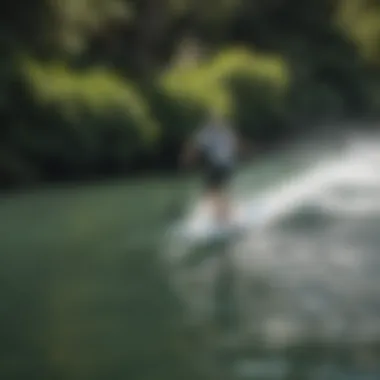
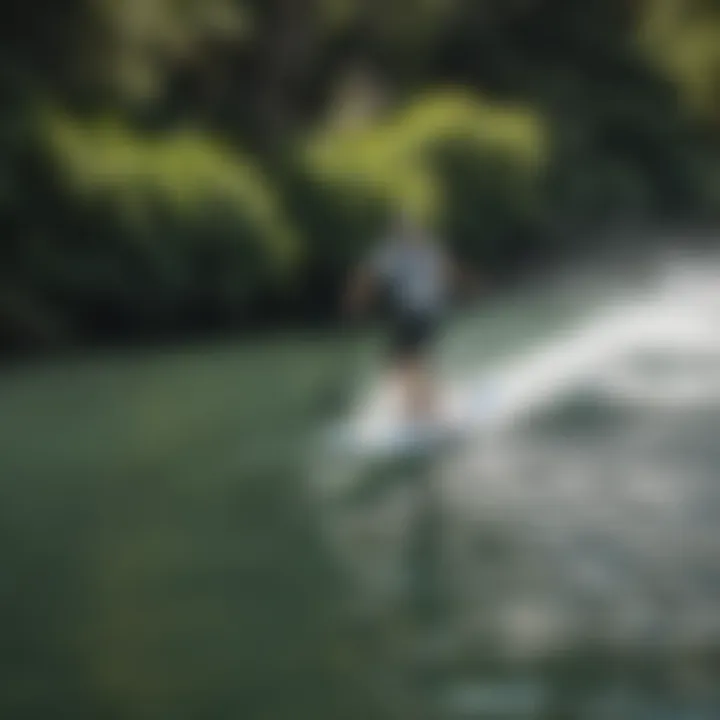
Surfers: Adapting the Ollie
For surfers, the ollie is not merely about popping off the water but also about navigating the ever-changing conditions of waves. When executing an ollie on a surfboard, proper timing and wave interaction are crucial. Unlike flat water, waves provide a moving platform, making energy transfer different.
To adapt effectively, consider the following techniques:
- Timing with the Wave: Catching the right moment in the wave's power zone ensures that you can leverage its energy. Look for the steep part of the wave, as it's where you can gain the most lift.
- Weight Distribution: Shift your weight back slightly before the ollie and then push down and forward to execute the jump. This motion helps in gaining height and direction simultaneously.
- Board Type: Different types of surfboards, like shortboards and longboards, demand adjustments in technique. Shortboards are more sensitive to weight shifts, while longboards may require a more gradual transition.
The ability to adapt the ollie to surf conditions not only enhances your aerial maneuvers but also plays a crucial role in wave riding progression.
Paddleboarders: Modifying the Technique
Paddleboarding has its nuances that directly influence how you perform an ollie. When balancing on a larger, broader board, the center of gravity and stability become vital elements in executing the trick.
Here are a few modifications you can incorporate:
- Stability and Balance: Maintain a wider stance with feet placed shoulder-width apart or slightly wider. This foundational position provides better control, especially when you're at the edge of your limits.
- Speed Up for Lift: Utilize a fast paddling motion before you attempt the ollie. This speed creates a forward momentum that helps you lift off the water.
- Use of Paddle: The paddle is not just for propulsion; use it for leverage too. When jumping, push down hard on the paddle, transferring that force into your jump for added height.
Mastering these adjustments on a paddleboard can make your time on the water much more enjoyable while also opening the door to new tricks.
Kitesurfers: Incorporating the Ollie
In kitesurfing, the ollie becomes even more intricate due to the dynamics of wind and the kite's pull. The trick becomes a dance between the board's motion and the kite’s angle.
Consider these elements when incorporating the ollie into your kitesurfing skill set:
- Edge Control: Keeping your edge deeply engaged in the water is vital for a successful ollie. The deeper the edge, the easier it is to pull off the jump.
- Using Kite Power: Timing your ollie with the kite's pull can maximize height. As you feel the kite generate power, initiate the jump. The lift from the kite can amplify the ollie significantly.
- Post-Landing Techniques: After landing, practice your transition and set up for the next move. Maintaining speed and control will make you a more fluid rider.
As you integrate these adaptations into your kitesurfing practice, you'll find that your ollies not only look impressive but also enhance your overall performance.
As each board comes with its unique characteristics, the ollie can be a versatile tool in your watersports toolkit, enabling riders to express their individuality while improving their skills.
When you embrace the nuances of each board type, you not only become a better athlete but also deepen your connection with the sport. Understanding how to execute the ollie in various contexts allows you to progress and enjoy your time on the water even more.
Common Challenges in Mastering the Ollie
Learning the ollie is not just about grasping the mechanics; it's also about understanding the hurdles that come along with it. The journey to mastering this technique can be fraught with challenges that can test a person's resolve. While the thrill of successfully executing an ollie is exhilarating, getting there often requires confronting fear, managing physical limitations, and dealing with potential falls. As such, acknowledging these common challenges can make a substantial difference in mastering the ollie. By working through these issues, enthusiasts can build not just their skills, but also their confidence.
Overcoming Fear and Anxiety
Fear often plays a significant role in watersports, especially when it comes to performing tricks such as the ollie. Those new to the game might find themselves holding back, worrying about making a mistake or getting hurt. This fear can become a major roadblock in the journey to mastering the ollie. To circumvent this hurdle, a gradual approach can be effective. Building up slowly can help mitigate anxiety.
For example, start practicing in calmer conditions or even on flat surfaces like soft sand. Another strategy is visualization. Before attempting the trick, taking a moment to picture oneself executing the ollie successfully can prime the mind for success. Remember, everyone starts somewhere; it’s all about persistence. Here are some steps to help overcome fear:
- Set small, achievable goals: Focus on mini milestones, like hopping off the ground slightly, before attempting the full ollie.
- Find a supportive community: Surrounding oneself with more experienced individuals can boost confidence.
- Practice resilience: Understand that failures are part of the learning process, and embrace them.
"Confidence comes from discipline and training."—Robert Kiyosaki
Dealing with Falls and Injuries
Every watersport athlete eventually faces falls and, at times, injuries. The ollie is no exception. When attempting this trick, the risk of falls can elevate significantly, particularly for those who are learning. Understanding how to deal with these situations is crucial for both physical safety and mental resilience.
A few considerations can help manage this aspect:
- Falling safely: Learning how to fall can reduce the risk of injury. Tucking and rolling with the fall, rather than stiffening up, is often more effective in preventing serious injuries.
- Use of protective gear: Wearing helmets, knee pads, and wrist guards can greatly increase safety while practicing ollies.
- Listening to your body: If there’s pain or discomfort, it’s best to take a step back. Pushing through pain can lead to more serious injuries down the line.
Inculcating a mindset that accepts failures as learning experiences rather than setbacks is invaluable in overcoming the fear of falling.
Physical Limitations and Adaptations
Physical limitations can vary greatly from one person to another. It is important to acknowledge and adapt to these differences. Someone may have a lower upper-body strength, while another might struggle with balance. Recognizing these limitations and working on adaptations is key to effectively mastering the ollie.
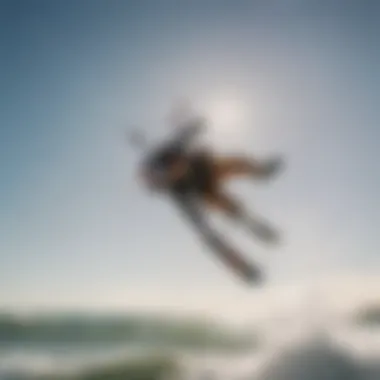
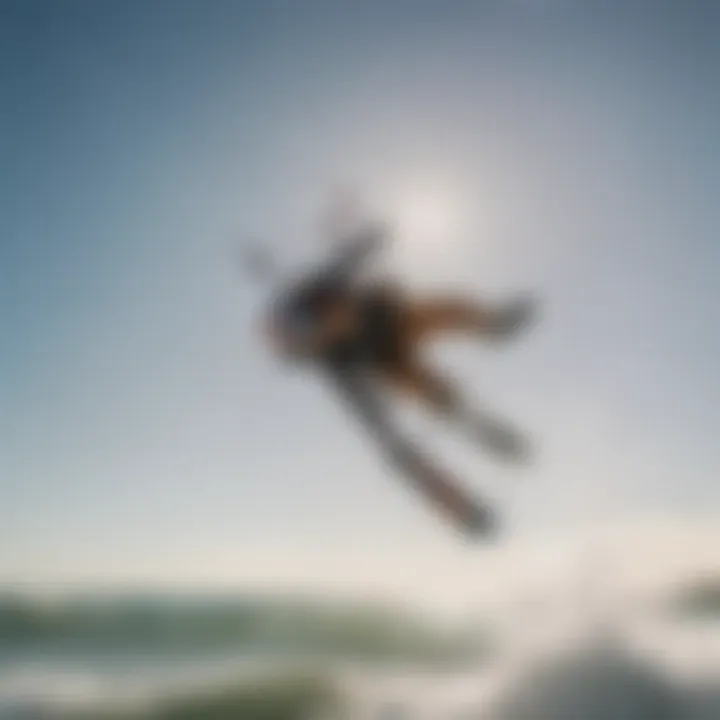
Several ways to adapt to physical challenges include:
- Modified techniques: For someone with limited jumping ability, finding a more gradual method to achieve lift can be beneficial. For instance, utilizing the momentum of the water can sometimes be an effective alternative.
- Strength training: Integrating exercises focused on core strength and leg muscle resilience can make executing an ollie much easier.
- Consulting professionals: If certain physical concerns arise, speaking with trainers or physical therapists can offer tailored approaches that consider individual needs.
Understanding one's body can help refine technique and open avenues for improvement, emphasizing the importance of individual adaptability in mastering the ollie.
Training Tips for Enhancing Ollie Skills
Mastering the ollie is no walk in the park. It demands not only practice but also a solid approach to training. With proper techniques, riders can build the necessary muscle groups and gain familiarity with the board, making the transition from novice to adept smoother. These training tips will shine a light on critical aspects that can boost your ollie performance across various watersports, whether you're a surfer, a paddleboarder, or a kitesurfer.
Strength and Flexibility Exercises
Strength and flexibility are two sides of the same coin when tackling the ollie. Riders need robust leg muscles and a body that can bend and twist as required. Performing squats, lunges, and deadlifts can help build the power necessary for popping the board. These exercises create explosive strength in your legs, which translates into a more powerful ollie. Furthermore, adding stretches to your routine, like hamstring and quad stretches, prevents injuries and helps maintain fluid movement.
- Key Exercises:
- Squats
- Lunges
- Deadlifts
- Hamstring stretches
- Quad stretches
Incorporating these into your weekly workouts will pay off when it's time to hit the water. Not only will you find yourself flying higher, but you'll also feel more confident in your general movements.
Practicing on Different Surfaces
Training on various surfaces can work wonders for your ollie technique. While the water is your final stage, practicing on solid ground, such as a skateboard or a grassy patch, can help you develop muscle memory. Each surface offers unique challenges and benefits:
- A skateboard simulates movements needed on a surfboard, so feeling comfortable on it can translate well to your ollies in water.
- Grass gives a softer landing, allowing for risk-free practice of timing and body mechanics without the fear of crashing.
- Sand can mimic the feel of the water surface but requires extra control to balance and perform the ollie correctly.
Every change-ups you make in your training surface adds layers to your skill set, helping you adapt to varying conditions.
Utilizing Video Analysis
In the realm of performance, sometimes we know what we want to achieve, yet translating it to action can be challenging. Using video analysis can be a game-changer. Recording your attempts can help pinpoint where you falter, whether it's in pop timing, body positioning, or board control. Reviewing your footage allows you to:
- Spot errors you might not notice while riding.
- Analyze your body posture and adjustments needed.
- Compare your progress over time.
Consider using apps that allow for slow-motion playback, which can provide crucial insights. Share these recordings with friends or even mentors who might spot areas for improvement that you overlooked.
"A good coach and a keen eye can drastically change the trajectory of your skill development."
In summary, these training tactics, when diligently applied, will improve not only your ollie but also your overall confidence and enjoyment in the sport. Practicing strength and flexibility, adapting to various surfaces, and using video feedback lay down the groundwork for taking your ollie skills to new heights.
Integrating the Ollie into Advanced Maneuvers
Mastering the ollie is a fundamental milestone in the journey of any watersports enthusiast. But the value of this trick goes well beyond its execution; it serves as a crucial gateway into the world of advanced maneuvers. When you begin to integrate the ollie into more complex moves, you not only enhance your skill set but also unlock new dimensions in your riding style.
Linking the Ollie with Other Tricks
For many athletes, the ollie is the key that opens the door to a plethora of other tricks. Once you’ve got the ollie down, you can experiment with various combinations that ultimately make your time on the water far more dynamic.
Imagine linking an ollie with a 180-degree rotation or a grab maneuver. Not only does this elevate the overall performance, but it also keeps fellow surfers or riders guessing your next move. Adding these elements requires a good balance of timing and technique.
Here are some ideas for linking your ollie with other tricks:
- Ollie to Air Reverse: Propel yourself into the air and then spin around as you descend. This takes precision but offers a stunning visual effect.
- Ollie with a Grab: Reach down to grab your board mid-air. It might look simple, but it’s a crowd-pleaser and shows off your control.
- Ollie to Rotation: Combine the ollie with a spin—like a 360. This can be challenging as the spin adds complexity, yet it enhances your versatility significantly.
Experimenting with these combos can lead to a more individualized style and help develop your unique flare on the water.
The Role of Style and Creativity
In watersports, style is king. Integrating the ollie into more advanced tricks allows for personal expression to shine through. A lot of how you perform is about the little details—foot placement, body posture, and the way you prepare for a trick. These nuances can make the difference between just landing a trick and landing it with charisma.
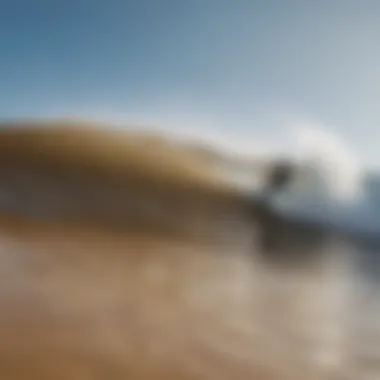
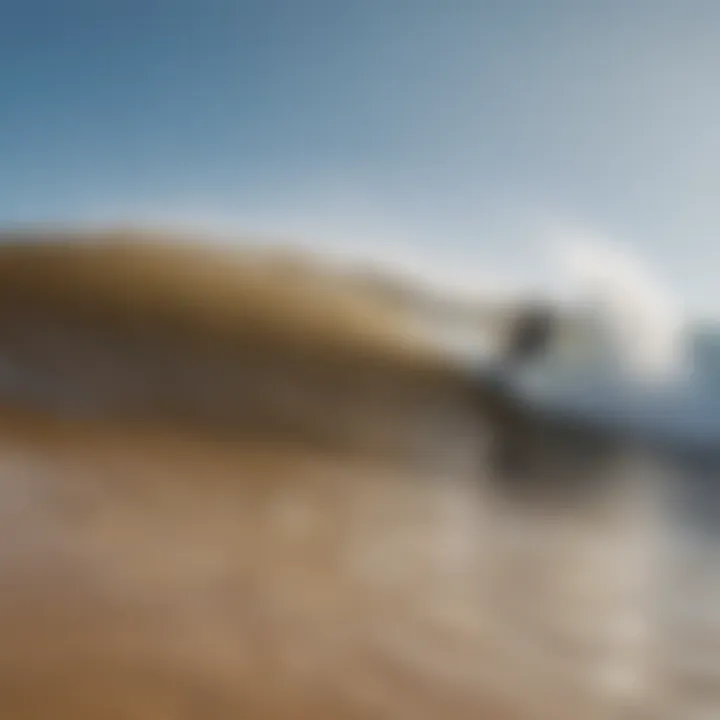
Creativity doesn't only reside in the execution of the trick but also in how you approach your surroundings and conditions.
- Use the Environment: For instance, when riding waves, you can use the shape of the swell to assist your ollie. A wave's momentum can lead to a smoother transition into a trick.
- Vary Your Approach: Don’t stick to the same entry point. Experiment with angles and speeds; end up finding what works best for you and surprise yourself.
- Incorporate Personal Taste: Think of the ollie as your canvas. Would you prefer more pops or a fluid motion? Each choice contributes to the overall vibe of your tricks.
"Mastery is the ability to execute simple things in a complex environment." - Unknown
Integrating the ollie into advanced maneuvers not only enhances your skills but also underlines your identity as a rider. Remember, watersports are as much about self-expression as they are about technique. Thus, let the ollie be your starting point and your base for future creativity on the water.
Safety Considerations while Practicing Ollies
Practicing ollies is an exhilarating pursuit for anyone involved in watersports, but like every thrill, it carries its share of risks. Prioritizing safety ensures not just the longevity of one’s passion but also the ability to continually hone skills without unnecessary setbacks. In this section, we’ll dissect crucial aspects of safety, the advantages of protective gear, and the significance of picking appropriate spots to practice your ollies.
Protective Gear Recommendations
First and foremost, having the right protective gear can significantly minimize injuries while perfecting the ollie. Here are some essentials to consider:
- Helmet: A well-fitted helmet is critical for protecting the head against impacts. When a wipeout happens—and it will—it’s better to be safe than sorry.
- Wrist Guards: Twisting an ankle is often a risk when practicing ollies, especially during those initial missteps. Wrist guards can help prevent sprains and breakage.
- Knee Pads: Knees tend to take a beating in any sport, but especially in watersports where falls are common. Knee pads help add a cushion for those inevitable falls.
- Impact Vest: For paddleboarders or kitesurfers, an impact vest can provide additional protection on your torso, reducing the chance of bruises from board crashes or wipeouts.
Wearing these items may feel cumbersome at first, but it’s a small price to pay for security in a sport where accidents can be part of the thrill. Plus, like with any skill, getting comfortable in your gear can very well become second nature.
Choosing Safe Locations for Practice
Selecting the right site for practicing ollies can make or break your session, literally. An inappropriate environment can lead to accidents or hinder your learning process. Here are some guidelines to ensure safety while practicing:
- Shallow Waters: Aim for spots with shallow depths to reduce injury from falls. This way, when you tumble, it’s more of a splash than a bash.
- Calm Conditions: On days when the water is choppy, it’s best to leave the ollies for another time. Calm conditions will help in focusing on technique without the distraction of waves crashing unexpectedly.
- Clear Areas: Always look for locations free from obstacles—other surfers, rocks, or jet skis. Finding an open stretch lets you concentrate on nailing your ollies without the distraction or danger of an embarrassing collision.
- Designated Training Zones: Some areas may specifically cater to practitioners like you—check in with local communities or forums (like on Reddit) to find such spots.
"Safety is not just a priority, but a responsibility we take for ourselves and our fellow enthusiasts in the community."
Remember, fostering a safe environment while practicing ollies not only contributes to individual progress but also promotes a culture of mindfulness within the watersports community. This is particularly important in areas where people are learning and may not be aware of all the hazards.
By adopting the right practices and utilizing adequate protective equipment, you embrace the adventurous spirit of watersports with a prudent approach that enhances not just safety, but also skill development.
The Community Aspect of Ollies
In the world of watersports, the ollie serves not just as a technical skill but also as a gateway into a vibrant community of enthusiasts. This aspect of ollies emphasizes shared experiences, peer support, and the camaraderie that develops among practitioners, weaving bonds that can last beyond the water.
Through the act of mastering this foundational trick, individuals often find themselves in a community where knowledge and skills can be shared. The informal nature of learning in groups creates an environment rich with diverse perspectives and a blend of experiences. When someone nails their first ollie, it goes beyond personal achievement; it becomes a celebratory moment that everyone in the group relishes. This shared journey fosters connections among surfers, paddleboarders, and kitesurfers, creating a web of support that carves out a nurturing pathway for newcomers and veterans alike.
Shared Experiences among Enthusiasts
The thrill of catching the right wave or the perfect breeze while executing an ollie often leads to shared narratives among watersport aficionados. These stories hold weight; they resonate deeply within the community.
- Storytelling: After a successful day out on the water, groups may gather to share tales. Whether it's about nailing a trick or a close encounter with nature, these narratives serve to inspire and motivate. They remind each individual that every ollie attempted comes with its struggles and triumphs.
- Events and Competitions: Local and regional competitions are also venues where shared experiences come to life. They create a platform for participants to display their skills while forming bonds with fellow athletes. While competition may seem fierce, the atmosphere is often one of encouragement and mutual respect. Each person's performance becomes another's learning opportunity.
- Online Platforms: In the age of social media, enthusiasts are connecting like never before. Online forums and platforms such as Reddit and Facebook have members sharing tips, providing feedback on each other's techniques, and offering encouragement. This virtual community extends learning opportunities beyond geographic limitations. It's a way for surfers and paddleboarders to cross paths, even when they're miles apart.
Learning from Others: Mentorship and Peer Support
Mentorship plays a vital role in the watersports community, particularly regarding mastering ollies. When individuals feel a sense of belonging, they are more likely to pursue challenges with enthusiasm instead of trepidation. This reliance on mentorship takes various forms:
- One-on-One Guidance: Newer practitioners often look up to more seasoned athletes for direct instruction. Those with years of experience can offer techniques and insights that a beginner might overlook. Peer-to-peer coaching has shown to improve skills rapidly and effectively.
- Workshops and Local Meetups: Many communities organize workshops where advanced surfers and paddlers share their expertise. These gatherings provide not only skill-building opportunities but also foster a sense of belonging. Participants can witness first-hand the tricks and tips passed down from those who have faced similar challenges.
- Constructive Feedback: Having someone watch and provide feedback during practice can be invaluable. Individuals can better grasp their mechanics, whether it’s foot placement or timing, through the lens of someone more skilled. This relationship often leads to new friendships that transcend the sport itself.
The community aspect of ollies is an integral, multidimensional experience for all involved. It's through these connections, whether on the shore or in an online forum, that enthusiasts can truly flourish, transforming from solitary learners into dynamic contributors to the larger watersports culture.
Ending: The Lifelong Journey of Mastering the Ollie
As we wrap up our exploration of the ollie, it's clear that this trick is more than just a flashy move; it serves as a launching pad for all sorts of advanced techniques in watersports. Whether it's surfing, paddleboarding, or kitesurfing, mastering the ollie opens up a world of possibilities for enthusiasts aiming to elevate their game over the years.
Every ollie you execute is a step forward on a long journey toward both personal and athletic growth. It’s quite similar to learning to ride a bicycle—you start wobbly and unsure, but with persistence, you gain not just balance but confidence. This is the essence of the ollie: it’s about developing a core skill that builds the foundation for other tricks while enriching your experience on the water.
Key Elements of this Journey:
- Continuous Learning: The process doesn’t stop after your first successful ollie. Each attempt offers a new lesson that keeps you engaged. Small tweaks to forms, foot placement, or timing can lead to unexpected improvements.
- Community Engagement: Sharing your experiences with fellow enthusiasts can greatly enhance your knowledge. Whether through reddit communities or local meet-ups on facebook, engaging with others adds an element of camaraderie and support.
- Personal Reflection: Take time after each session to reflect on what worked and what didn’t. Keeping a journal about your progress not only offers insight but also tracks your evolution in mastering the ollie.
"The journey of mastering the ollie is no sprint; it’s a marathon that, when enjoyed, keeps you inspired long after you leave the water."
Keeping safety at the forefront while you hone your skills is paramount. Using protective gear and practicing in safe locations will help you progress without unnecessary risks. Additionally, consider all the moments of hardship and triumph that come along the way—they're just as defining as the technical feats.
To sum up, becoming adept at the ollie isn’t just about nailing the trick. It’s a lifelong venture that offers the chance to connect with the water, meet fellow adventurers, and continuously push your limits. As you embark on this journey, remember to embrace every wave, every fall, and every victory, no matter how small. The path may be challenging at times, but the rewards—improved skills, deepened understanding, and unforgettable experiences—are well worth the ride.



